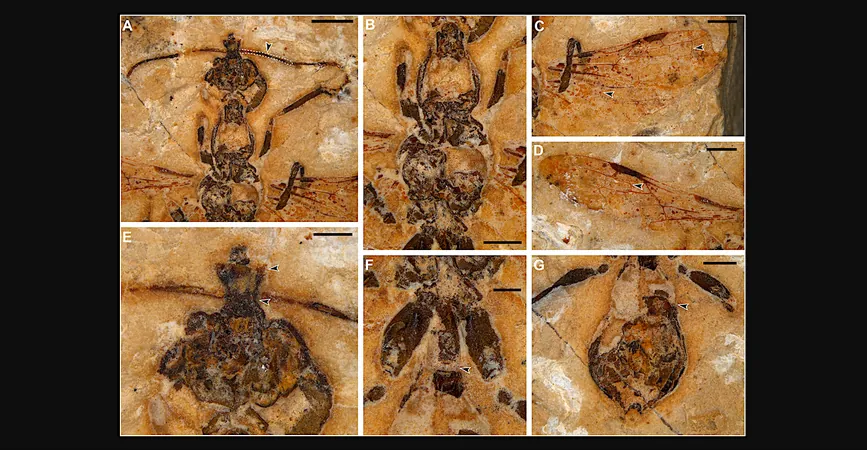
Unveiling the Ancient: The Oldest Ant Fossil Discovered in Brazil!
2025-04-26
Author: Noah
A Jurassic Discovery: Meet the Ancient Hell Ant
Get ready to have your mind blown! A groundbreaking report has revealed that a 113-million-year-old fossilized ant, dubbed the 'hell ant,' has been discovered in northeastern Brazil, making it the oldest specimen of its kind known to science. This remarkable find was published in the prestigious journal Current Biology.
Preserved in limestone rather than the more common amber, this hell ant belongs to the extinct subfamily Haidomyrmecinae, which thrived during the Cretaceous period. With its scythe-like jaws, this ancient creature was likely a fierce predator, capable of pinning or impaling its prey in a way that would make today's ants envious.
A Revolutionary Insight into Ant Evolution
According to Anderson Lepeco from the Museu de Zoologia da Universidade de São Paulo, this discovery not only introduces a new species but also challenges our understanding of ant evolution and how these insects spread across the globe. Previously, the oldest known ant fossils were preserved in amber from locations like France and Burma. The presence of the hell ant in Brazil suggests that ants had already diversified and established a wide geographical presence during their early development.
Spotlight on Brazilian Paleontology
Lepeco and his team stumbled upon this 'remarkably well-preserved' specimen by meticulously examining an extensive collection of fossil insects from the Crato Formation. This site is famous for its exceptional fossil preservation, underscoring the value of exploring existing collections in museums.
Upon discovering the fossil, Lepeco remarked on its significance, emphasizing its role in shining a light on the importance of Brazilian paleontology and the wealth of insect fossils yet to be explored in the region.
Decoding the Oldest Ant's Anatomy
Advanced techniques like micro-computed tomography imaging revealed that this hell ant is closely related to others previously found only in Burmese amber, indicating that these insects likely traversed ancient landmasses. But what astonished researchers were the ant's highly specialized feeding apparatus.
Unlike modern ants that move their mandibles side to side, this species had forward-facing, parallel mandibles—an anatomical anomaly that suggests a highly evolved predatory strategy even in primitive times!
The Future of Ant Evolution Research
The discovery of this ancient ant raises intriguing questions about the evolutionary forces that shaped its unique traits. With modern imaging technology at their disposal, researchers can delve deeper into ancient fossils than ever before, unlocking secrets that could redefine our understanding of insect evolution.
A Paleontological Marvel Awaits!
This incredible fossil not only enriches the narrative of ant evolution but also serves as a pivotal piece in the puzzle of Earth’s biological history. As we continue to explore the past, who knows what other surprises await in the world of paleontology?









 Brasil (PT)
Brasil (PT)
 Canada (EN)
Canada (EN)
 Chile (ES)
Chile (ES)
 Česko (CS)
Česko (CS)
 대한민국 (KO)
대한민국 (KO)
 España (ES)
España (ES)
 France (FR)
France (FR)
 Hong Kong (EN)
Hong Kong (EN)
 Italia (IT)
Italia (IT)
 日本 (JA)
日本 (JA)
 Magyarország (HU)
Magyarország (HU)
 Norge (NO)
Norge (NO)
 Polska (PL)
Polska (PL)
 Schweiz (DE)
Schweiz (DE)
 Singapore (EN)
Singapore (EN)
 Sverige (SV)
Sverige (SV)
 Suomi (FI)
Suomi (FI)
 Türkiye (TR)
Türkiye (TR)
 الإمارات العربية المتحدة (AR)
الإمارات العربية المتحدة (AR)